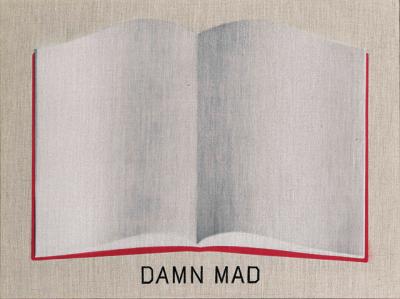Less Is More: Minimalism Revisited at Guild Hall

Minimal Art does not have the strong connection to the East End that landscape painting, Abstract Expressionism, or Pop do. And, with the exception of Dan Flavin, Minimalism does not characterize the production of artists who have lived and worked here since the mid-1970s. It might, therefore, come as a surprise that “Aspects of Minimalism: Selections From East End Collections” will open at Guild Hall in East Hampton on Saturday with a reception from 4 to 6 p.m. and continue through Oct. 10.
Minimal Art, which flourished in the 1960s, sought to eliminate personal expression from the work of art, which was to exist as a thing in itself, without reference to anything other than its materials and its presence. Industrial materials and mechanical fabrication often replaced the handmade, and symmetry, simplicity, and systems often determined the look of the work. Like Pop, which emerged more or less concurrently, it discarded the personal, heroic, and expressive qualities of Abstract Expressionism, which had so dominated the art world of the 1950s.
The Guild Hall exhibition is not strictly limited to canonical Minimalists but instead includes artists who have used materials or ideas that result in interesting relationships with those artists. The pre-eminent artists in the show who are closely associated with the movement are Larry Bell, Mr. Flavin, Robert Irwin, Donald Judd, and Agnes Martin. Artists whose work reflects or anticipates the influence of the minimalist aesthetic are Josef Albers, Blinky Palermo, Joseph Beuys, On Kawara, Gerhard Richter, Bridget Riley, Edward Ruscha, Andy Warhol, and Rachel Whiteread.
Christina Mossaides Strassfield, Guild Hall’s museum director and chief curator, conceived of the exhibition two and a half years ago. “I had visited one collector’s house,” she recalled, “and there were some amazing Minimalist pieces there. I thought, wow, we had done a Dan Flavin show a number of years ago, but we really hadn’t paid a lot of attention to Minimal Art, in part because our mission is to show artists who live or work on the East End, and not many of the Minimalists had. But here were three collectors who had wonderful Minimalist Art and art that reflects aspects of the Minimalist aesthetic.”
One example of a relationship between artists cited by Ms. Strassfield is that between Bridget Riley and Agnes Martin. Though Ms. Riley is associated with Op Art, which emphasized optical illusions, “the grid patterns and lines in her work look so wonderful when you compare them to Agnes Martin’s work.”
The English artist Rachel Whiteread casts the space inside and outside objects and buildings to yield negative impressions in materials such as rubber, resin, and concrete. Thus her “Untitled (Double Vision II),” a 2015 casting of a window, with its symmetry and rectangularity, resembles a Minimalist piece, but without the underlying aesthetic principles of that movement.
“It’s just very exciting to see the relationships,” said Ms. Strassfield, “whether it’s the materials or the design or the aesthetic. This will be a very minimalist installation. The works need the space around them, and I think it will transform the way the building and the galleries work. I love mixing it up. Last year we had Pop, with Roy Lichtenstein, and we just had Peter Beard. The next show will be very different.”
Several public programs are planned in conjunction with the exhibition. On Saturday from 3 to 4 p.m., Leonard Riggio, the founder and executive chairman of Barnes & Noble, will discuss “Philanthropy, Collecting, and Minimalism.” James Meyer, the curator of the Dia Art Foundation Gallery, will talk about the work of Dan Flavin on Sunday afternoon at 3. Ms. Strassfield will lead a gallery tour on Sept. 17 at 2 p.m.
